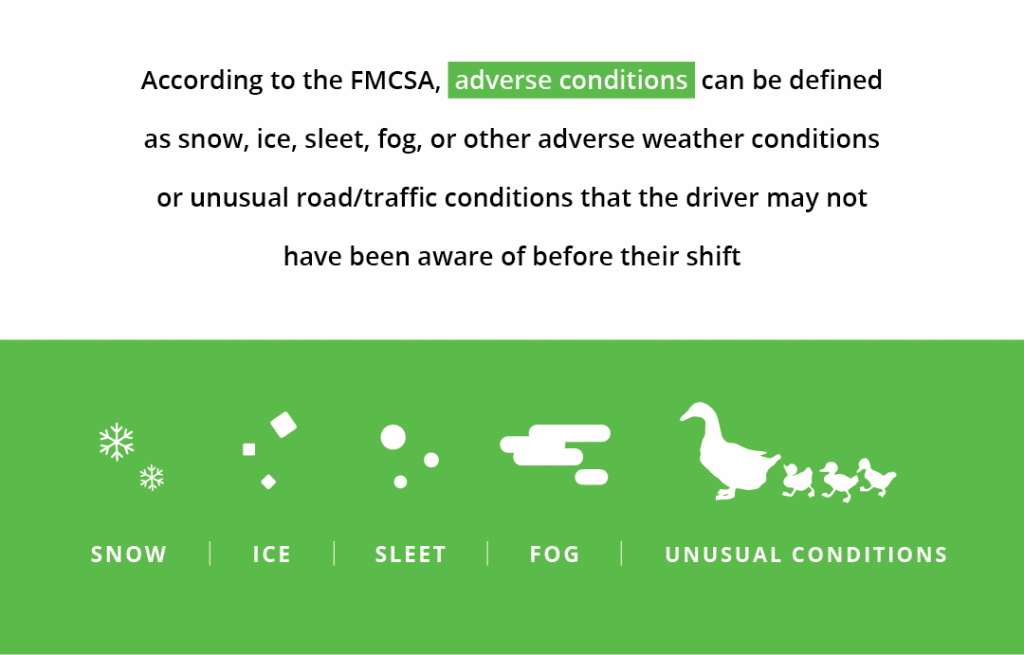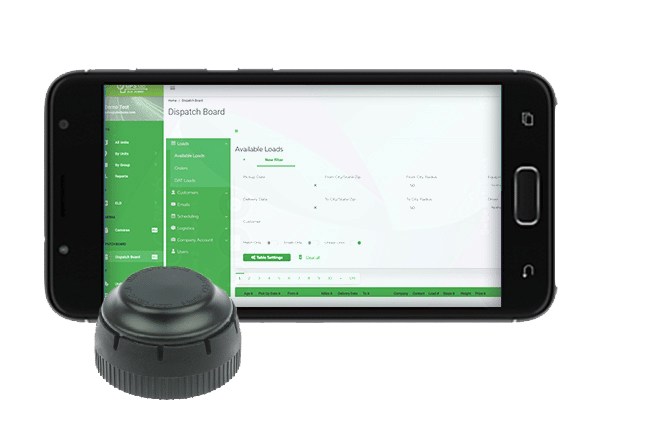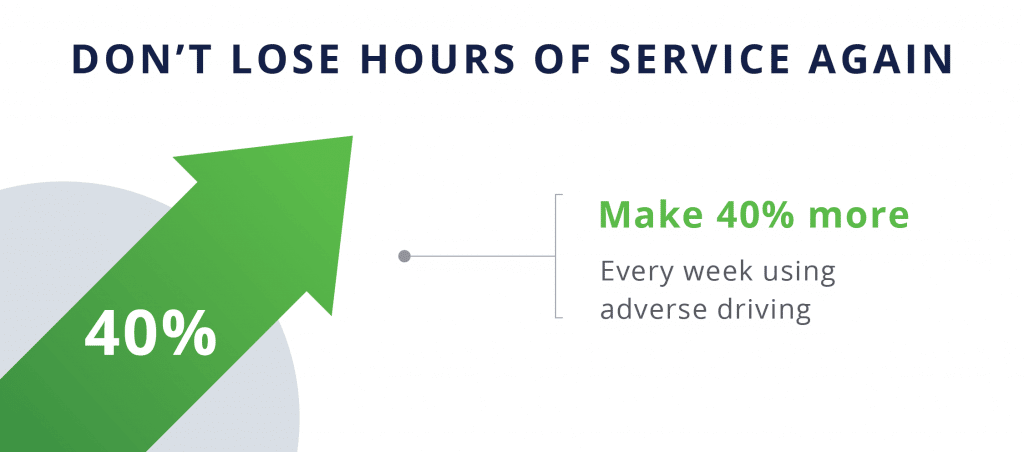40% of America’s driving capacity is unused every day per MIT researcher
Find out the hidden reasons why your business can be losing time and money every week and how to get it back.

As a driver or fleet owner, have you ever thought: How can my fleet make more money?
In fact, a researcher from MIT just presented data to congress that the average trucker drives just 6.5 out of their 11 hours daily.
That means that drivers are losing about 40% of their driving hours every day. This translates into a 40% reduction in
- Supply chain capabilities for consumers and businesses
- Earnings for trucking and logistics individuals
- Jobs and new opportunities in the trucking and logistics sector
But what if we told you that there is a legal way to drive longer every week?
It’s called the Adverse Driving Conditions Exception.
In this blog, we’ll give you insight into what the Adverse Conditions Exception is and how you and your business can use it to make up lost hours.
What is the Adverse Driving Conditions Exception?

The Adverse Driving Conditions Exception is a part of the FMCSA guidelines that allows truckers to add 2 hours to their hours of service if they’re dealing with adverse driving conditions.
By applying the exception, you’re not only adding 2 hours to your driving time, but you’re also adding 2 hours to your on-duty time. This leaves you with a total of 13 hours of driving time and 16 hours of on-duty time for that day.
This will allow you and your fleet to regain the time you lost while waiting in traffic due to a wreck or waiting for heavy rain to pass.
While the exception existed long before last year–as of 2020, it was clarified by the FMCSA, providing people like you with more insight into how the exception can be used.
Before the clarification, the FMCSA had not specified what conditions can be considered “adverse.”
This meant that drivers, fleet owners, and owner-operators were rightly hesitant to use the Adverse Driving Conditions Exception. Why would they risk a violation–and lower CSA scores–especially if they didn’t have enough information to implement the exception correctly.
Well, that’s no longer the case with GPSTab. Unlike other ELDs, we closely follow the guidelines of the FMCSA and make it easier than ever to easily get your 2 additional hours.
What are considered adverse driving conditions?
The FMCSA’s 2020 clarification states that adverse conditions can be defined as:
- Snow
- Ice
- Sleet
- Fog
- Other adverse weather conditions
- or unusual road or traffic conditions that couldn’t be reasonably known to a driver before the start of their shift or after a break and to a carrier before dispatching the driver.

What this means is that if you cannot drive as you normally would because of bad weather or other forms of unforeseen traffic–you can extend your driving and on-duty time by 2 hours to make up that lost time.
When can I use the Adverse Conditions Exception?

The FMCSA has left some room for interpretation by saying that the exception can be used for “other adverse weather conditions or unusual road or traffic conditions that couldn’t be reasonably known to a driver before their shift or after a break.”
Imagine this: you’re driving down I-80 and there’s been an accident. Authorities have arrived on the scene and there’s now a traffic jam that keeps you stopped for a couple of hours.
Could you have reasonably known this would happen? Of course not. Therefore, in this situation, you can viably use the Adverse Driving Conditions Exception to add 2 hours to your hours of service.
Now, let’s say you’re driving down 1-80 at a time where traffic is common and there’s nothing of note that’s occurred–like an accident. You may lose hours of service, but because this situation is typical, you cannot use the exception.
If you do so, you could be at risk of receiving a violation from a DOT officer.
How often can you use Adverse Conditions?
Provided that you’re using the Adverse Driving Conditions Exception because of adverse weather conditions or unforeseen traffic conditions, there is no limit imposed by the FMCSA on how often the exception could be used so long as the use is valid.
While there is no limit, you’ll want to make sure you’re using the exception for valid reasons that can be explained to a DOT officer in the event of an inspection or audit.
These include some of the reasons the FMCSA has outlined such as snow, ice, sleet, fog, other weather conditions, or traffic conditions you could not have reasonably seen coming before your shift or after a break.
How do I apply the Adverse Conditions Exception?

Using the Adverse Driving Conditions Exception can be done on an ELD. As long as your provider makes it available for you and doesn’t make it a hassle, it should be simple to use.
This tends to be the case with most ELDs, however. They either don’t have it as an available feature or if they do, they make you go through multiple steps just to apply it.
That’s not the case with our no-contract ELD, GPSTab.
With GPSTab, applying the Adverse Driving exception can be done with the click of a button. No other ELD makes it this easy for you to add 2 hours to your hours of service.
We help you regain lost hours of service without any roadblocks–just select Adverse Driving on the app and you’re good to go.
How to use Adverse Driving on GPSTab

Whereas other ELDs make it hard to use the Adverse Driving Exception–or don’t even make it available to you–we know how important it is for you to have easy access to this feature.
Next time you’re losing hours because of adverse weather or unforeseen traffic, just apply the Adverse Driving feature on your GPSTab app in seconds. Here’s how:
- Scroll under the time chart on the home screen
- Select “Adverse Driving”
- Just add a reason for using the exception and you’re good to go!
Want to see how we can help you drive more miles with the click of a button? Start your 7-day free trial today by clicking here and get your hardware 20% off through 11/30/2021! Click here to shop for hardware.





